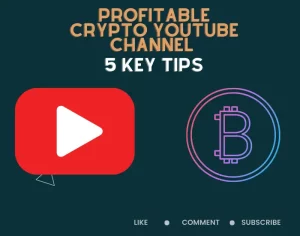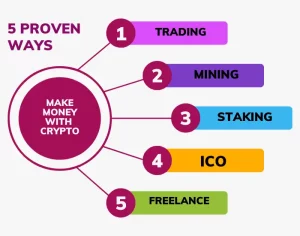
Non-Fungible Tokens (NFTs) have taken the world of art and gaming by storm! These digital assets are one-of-a-kind and cannot be swapped like cryptocurrencies. Each NFT represents ownership of a single item or piece of content. Artists are using this tech to monetize their art in new ways. Plus, in gaming, they provide players with exclusive virtual items.
NFTs have many advantages over traditional physical art. With blockchain technology, transactions are securely recorded and verified, giving the creator credit and compensation.
Though, there are worries about NFTs’ environmental impact due to energy consumed for blockchain transactions. But, sustainable options are being explored.
An incredible event happened recently – Beeple sold an NFT artwork for $69 million at a Christie’s auction! This landmark sale shows NFTs are going mainstream in the art world.
Exploring the Relationship Between NFTs and Art
To understand the relationship between NFTs and art, delve into the rise of digital art in the NFT space and the challenges and controversies surrounding NFT art. Explore how these sub-sections shed light on the evolving landscape of art ownership and the impact of technology on the art world.
The Rise of Digital Art in the NFT Space
Digital art in the NFT space? It’s skyrocketing! Accessibility is up, and so are artist earnings. Blockchain certifies ownership, eliminating fakes and boosting confidence. Prices rocket, creating opportunities for investors and artists alike.
Fear of missing out? Understandable! Join the cultural shift – don’t miss your chance to explore the potential of digital art within the NFT ecosystem. Venture into this groundbreaking era where creativity meets cutting-edge tech. Witness the meteoric rise of digital art!
Challenges and Controversies Surrounding NFT Art
Challenges and controversies surrounding NFT art have brought up many issues that need addressing. For example, the environmental impact of NFTs is a major concern as blockchain transactions use a lot of energy. People also question who owns the art, as it can be hard to prove its legitimacy. Copyright infringement and intellectual property rights are also possible, and the fluctuating cryptocurrency markets make it risky for artists and collectors. Lastly, some argue that NFT art could perpetuate elitism in the art world.
In addition, artists have expressed their frustration at not having control over their work once it’s an NFT. Plus, people worry about marginalized communities who may not have access to the technology or platforms needed to mint and sell their work as NFTs.
One interesting piece of NFT history is Beeple’s artwork “Everydays: The First 5000 Days” being sold for $69 million at auction in March 2021. This sale showed the potential of digital art and NFTs, and the value they can have in the market.
As conversations about NFT art continue, it’s important to think about the issues raised while exploring new possibilities. Artists, collectors, platforms, and audiences should all engage in meaningful conversations to address these concerns.
NFTs in the Gaming Industry
To revolutionize the gaming landscape, explore how NFTs are transforming the gaming industry. Discover the potential benefits and concerns of integrating NFTs in games. Embrace the game-changing power of NFTs to enhance player experiences and create new opportunities for gamers and developers alike.
How NFTs Are Changing the Gaming Landscape
NFTs have changed the gaming world! They utilize blockchain technology to give players true ownership of virtual assets, so they can buy, sell, and trade digital items. Here’s a look at how NFTs are shaking up the gaming scene:
- Ownership: Before, developers owned the assets. Now, players do!
- Value: Assets have real-world value they can trade.
- Interoperability: Players can trade items across platforms.
- Player Engagement: Players can get rewards for participating.
- In-game Economy: Player-driven, decentralized control.
Plus, NFTs offer enhanced security and transparency. Blockchain ensures each asset is verifiable and untamperable.
Take Sarah, an avid gamer with a virtual empire in an online strategy game. With NFTs, Sarah can now make money from her rare items. This has not only made her financially rewarded, but it has inspired her to explore the growing NFT market.
NFTs are revolutionizing the way players interact with digital worlds. As more games embrace this tech, gamers around the globe can look forward to more innovation and opportunities.
Potential Benefits and Concerns of NFT Integration in Games
NFT integration in games is a tantalizing prospect, bringing with it ownership of in-game assets, player-driven economies, and new revenue streams. But, there are risks to consider. Fraud is one of them, as counterfeit NFTs could reduce the value of the real ones. Exclusivity is another worry, as only those who can buy pricey NFTs will have access to certain features or perks.
It’s estimated that around $230 million was spent on gaming-related NFTs in the first half of 2021 (source: Dapp.com).
NFTs Beyond Art and Gaming: Other Applications
To explore NFTs beyond art and gaming, the section “NFTs Beyond Art and Gaming: Other Applications” with sub-sections of “NFTs in Collectibles and Memorabilia” and “NFTs in Real Estate and Virtual Land Ownership” will shed light on the diverse uses of NFTs. Get insights into how NFTs are revolutionizing the collectibles market and transforming the way we perceive real estate and virtual land ownership.
NFTs in Collectibles and Memorabilia
Sports fanatics can now own a digital version of LeBron James’ rookie card as an NFT for 6.4 ETH, showing the potential value and uniqueness of these items. Art aficionados can also own authenticated digital copies of Salvador Dali’s masterpieces as NFTs.
Music fans can purchase NFTs representing iconic vinyl records or even unreleased tracks. This helps musicians to generate revenue and gives fans a new sense of ownership and access.
Comic book lovers can also find their favorite titles in the NFT market. For example, Action Comics #1 featuring Superman was sold as an NFT for 87 ETH, highlighting its rarity.
NFTs have revolutionized the collectibles and memorabilia industry by connecting physical objects with digital ownership safely. Bloomberg reported that in 2020, the digital collectibles market was worth $250 million in sales.
NFTs in Real Estate and Virtual Land Ownership
NFTs can open up a world of possibilities for Real Estate and Virtual Land Ownership. Enhanced security, fractional ownership, tokenizing digital goods, smart contracts and easy deed transfers are just some of the features they offer.
Investing in NFTs related to real estate or virtual land? Make sure to research the project team, verify property rights and assess potential future demand for informed decisions.
The Future of NFTs: Opportunities and Challenges
To understand the future of NFTs and the opportunities and challenges they present, dive into emerging trends in NFTs, criticisms, and potential risks of the NFT market. Explore how NFTs are transforming the worlds of art, gaming, and beyond, while considering the concerns and uncertainties surrounding this evolving digital landscape.
Emerging Trends in NFTs
Celebrities are backing NFTs and virtual real estate is booming. Plus, gaming, digital fashion, and art markets are expanding too. Artists are creating new collaborative projects and pushing the limits of NFTs. To get ahead in the NFT space, stay informed about emerging trends. Look into niche markets beyond mainstream usage for maximum potential.
Criticisms and Potential Risks of the NFT Market
The NFT market has sparked both praise and criticism due to its unique nature. While offering exciting openings, it also comes with risks that should not be ignored.
These include:
- Volatility: NFTs’ value may swing drastically, leading to potential money drops for investors.
- No Regulations: The lack of regulations in the NFT market raises issues about fraud, copyright infringement, and unethical activities.
- Eco-Friendly Woes: The energy intake related to blockchain technology used in NFTs has caused environmental worries.
- Digital Ownership Disputes: Deciding ownership and intellectual property rights in the digital world can be tricky and lead to lawful disputes.
- Bubble Prospect: Some experts argue that the fame of NFTs may be motivated by hype and speculation, which could cause a bubble that later bursts.
- Accessibility Difficulties: The high costs linked with buying or creating NFTs limit availability for many people, creating an imbalance in the market.
In spite of these criticisms and potential risks, the NFT market still grows and gains attention from many industries. Companies are looking for ways to tackle these difficulties while tapping into the unique openings given by this digital asset class.
One such opening is connecting traditional art markets with digital art through NFTs. This enables artists to create new income sources and get recognition on a global scale. Moreover, NFTs can facilitate direct collaborations between artists, collectors, and fans while providing clarity through blockchain technology.
An example of the risks connected to the NFT market is when an artist called Beeple sold an artwork named “Everydays: The First 5000 Days” as an NFT for $69 million. However, soon after the sale, fake versions of the artwork began circulating, showing the challenges of digital ownership and genuineness. This event serves as a reminder for both artists and collectors in this emerging market.
The NFT market presents thrilling opportunities for creators, investors, and collectors. But, it is important to stay informed about the potential risks and difficulties associated with this changing space to make informed decisions. As the market keeps maturing, dealing with these considerations will be essential for its long-term sustainability and success.
Conclusion: The Impact and Potential of NFTs
NFTs have made a big impact. They’re revolutionizing the art world, allowing artists to make money. They’re also entering the gaming industry, with new experiences and opportunities for gamers. NFTs could even change ownership and authentication processes. One amazing NFT sold for $69 million at a Christie’s auction – that’s the most expensive ever!
(source: The Guardian).
Frequently Asked Questions
1. What are Non-Fungible Tokens (NFTs)?
NFTs are unique digital assets that use blockchain technology to establish ownership and provenance. Unlike cryptocurrencies such as Bitcoin, which are fungible and can be exchanged on a one-to-one basis, NFTs are indivisible and cannot be exchanged on an equal value basis.
2. How are NFTs used in the art world?
NFTs have revolutionized the art world by enabling artists to sell and monetize digital artwork. Artists can mint their creations as NFTs, allowing them to establish proof of originality, ownership, and scarcity. Collectors can then purchase these NFTs, providing a new way to invest in digital art.
3. Can NFTs be used in gaming?
Yes, NFTs have gained popularity in the gaming industry. Game developers can create unique in-game items or characters as NFTs, allowing players to buy, sell, and trade them. This introduces true ownership of virtual assets and the potential for players to earn real-world value through their in-game investments.
4. What is the environmental impact of NFTs?
NFTs have received criticism for their carbon footprint due to the energy consumption associated with blockchain transactions. However, some blockchain networks are working towards more sustainable solutions, such as moving from proof-of-work to proof-of-stake consensus mechanisms.
5. How do I buy or sell NFTs?
You can buy or sell NFTs on various online marketplaces specifically designed for NFT transactions. These platforms usually require a digital wallet that supports NFTs and use cryptocurrency for transactions. Popular marketplaces include OpenSea, Rarible, and SuperRare.
6. Is it possible to copy or counterfeit NFTs?
While NFTs themselves cannot be duplicated due to their unique blockchain records, digital art or content associated with an NFT can be copied or shared. However, the ownership and authenticity of the original NFT cannot be replicated, ensuring the value of the original piece remains intact.



